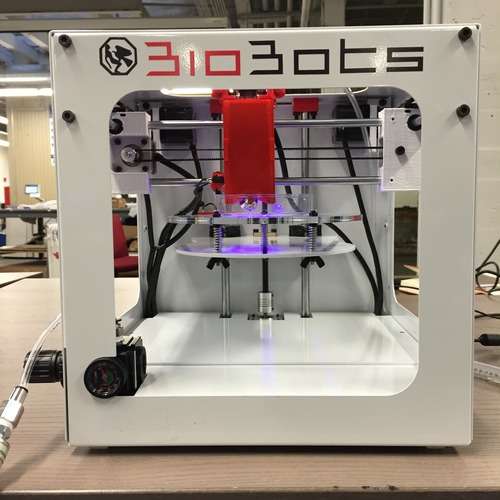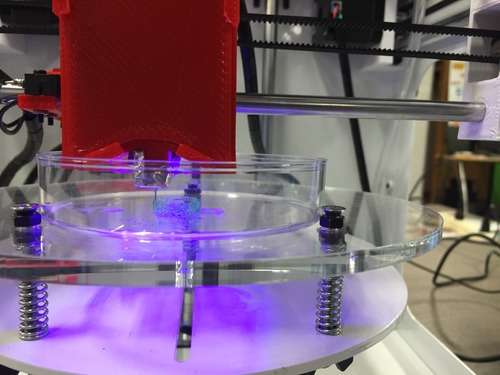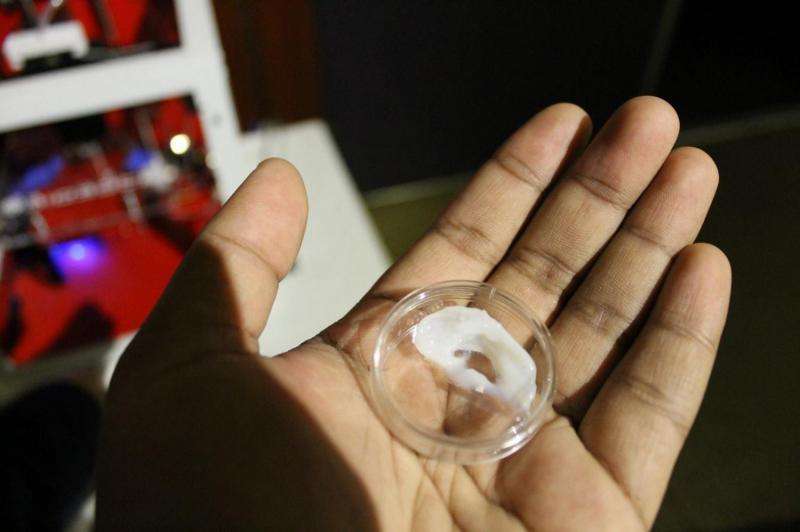May 7, 2015 weblog
BioBots bioprinter to complement cutting-edge research

A high-resolution desktop 3D bioprinter that builds functional 3D living tissue was shown recently at TechCrunch Disrupt in New York. The machine is significant as a less expensive way for researchers to build 3D functional structures of living tissue. BioBots is the name of the company behind the printer.
The company's printers have a stainless steel frame and layer resolution of 100 microns; they can handle small details. The startup's printer for biomaterials was discussed this week by TechCrunch reporter Natasha Lomas, who talked about both the printer and the founders' intentions in bringing the printer forward.
She said that the BioBots 3D printer gets its inspiration from small, low-cost desktop 3D printers used by the maker movement to extrude plastic—no plastic here, however. Instead, the BioBots device uses a special ink that can be combined with biomaterials and living cells to build 3D living tissue and miniature human organs.
Eric Mack in Gizmag talked about how BioBots works. "It uses a cartridge technology similar to that of inkjet printers, capable of building up tissues at a resolution of 100 micrometers. That tissue is then rapidly cured using a special blue light that does not damage the cells."
Lomas said, at this stage, the use-case is research and preclinical screening such as drug testing as a replacement for animal testing. Right now, said the startup's co-founder Danny Cabrera, it's more of a research tool. He said the company is dealing with researchers and R&D departments.
Mack in Gizmag said building tissues isn't a brand new science; the BioBots difference is in the team's goal "to combine the ability of high-end tissue fabrication – which often requires large, expensive machines running into the US$100,000 range that require technicians to operate – with the ethos of the maker movement and more inexpensive desktop 3D printing equipment."

The company is offering a printing solution which more researchers in biotech can accommodate. "Our idea was we can use the same approaches that were used in the maker movement to build smaller and cheaper devices in biotech," said Cabrera in TechCrunch. "When we looked at what was out there we found devices that existed were huge—they looked like old mainframe computers, they took up entire rooms, they cost half a million dollars and were really difficult to operate."
What would a customer of the startup use the printer for? Cabrera in TechCrunch said one example would be at a pharmaceutical company, where "they would build a 3D living tissue—a key example that keeps coming up again is for cancers. Build a miniature tumor and test cancer drugs on it, and see which of these drugs work and which ones don't. Basically if you can recapitulate what's happening in the body, if you can mimic the function of the body that's success. If not then we'll just try it again. That's the point of this digital fabrication technology—is that you can have really quick turnaround times, change up your designs really quickly."

Also, the printer will help create new capabilities, he said, as "you're literally adding an extra dimension to your tissue culture. Right now all this stuff is done in 2D, and now suddenly you can do it in 3D. Physiologically that's a lot more relevant. Cells in 3D behave very differently than they do in 2D. So companies are really excited to be working with this technology and it's something they've been looking for."
According to the company, the printer is available on pre-order for $25,000.
More information: www.biobots.io/
© 2015 Phys.org


















